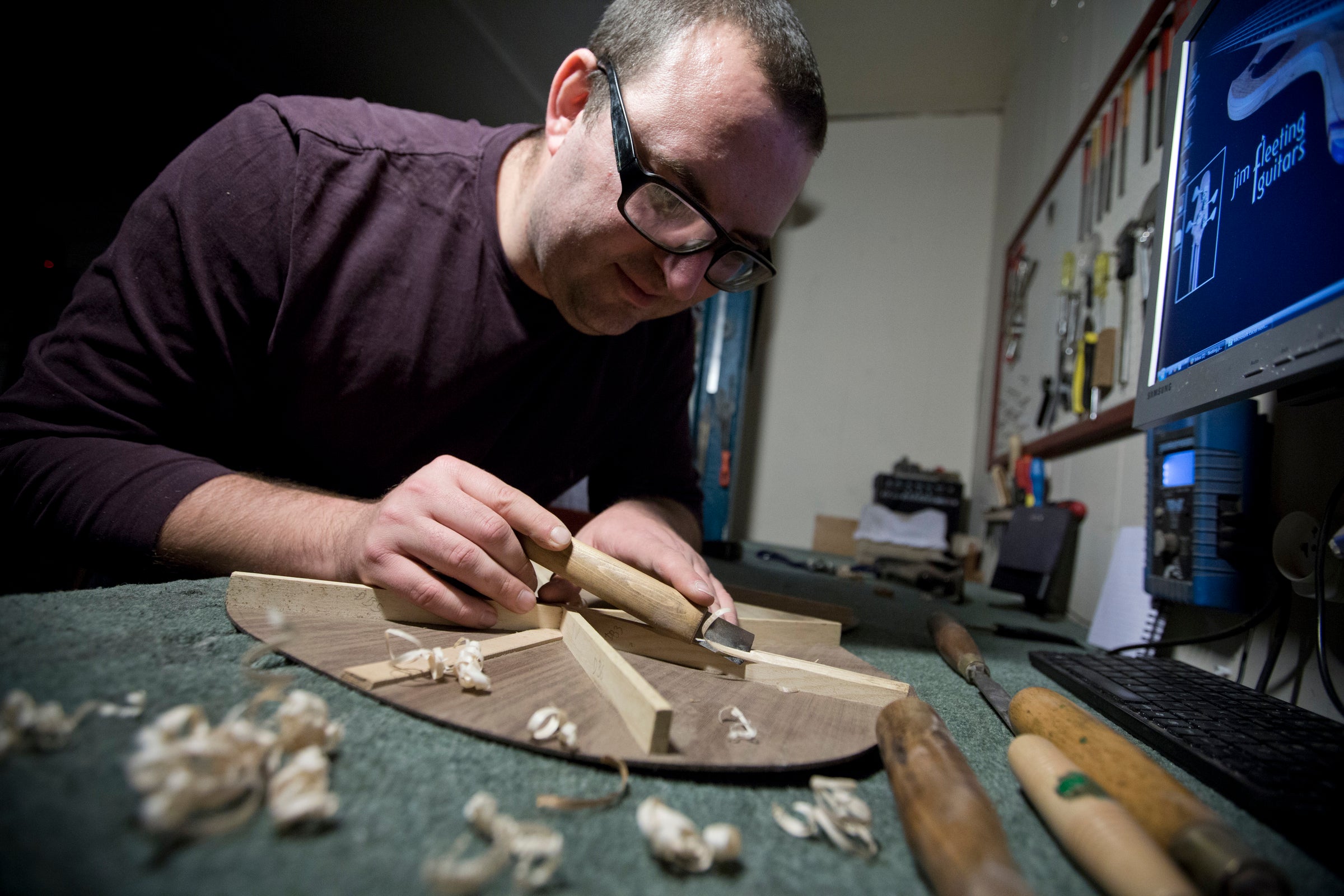“You need wood of the right stiffness,” says master luthier (a maker of stringed instruments) Jim Fleeting, about choosing a guitar.
“I usually make my necks from mahogany, because that is traditional, but Fender decided that maple would be better from an engineering perspective as it’s stiffer and more hardwearing,” explains Jim.
“More stiffness means more sustain (how long a string can be heard) which means less attack (the peak response when the string is plucked). The energy at the tail end of the note has to come from somewhere, and it comes from the start of the note.”
How does that help when choosing a guitar? “A lot of sustain will suit a classical guitarist, so that could be from a heavier wood such as rosewood. A flamenco guitar wants all attack, so they are made from nice, light Spanish cedar. “Stiff necks, such as maple, mean more energy goes to the top so there is no effect on tone. Because we’re used to mahogany guitars, it’s an effect in itself.” Jim has made guitars out of ebony, walnut, redwood, olivewood and even Bolivian rosewood. So which is best? “The stiffer the neck, the better I reckon,” says Jim, who jacked in his IT job in London to go to Arizona to pursue his passion and learn his craft.
“I’m making a guitar from sequoia as my wife and I went to the Sequoia National Park on honeymoon. Materials define a guitar’s voice. It’s not all about sound – it’s about aesthetics too.”
Subscribe to Independent Premium to bookmark this article
Want to bookmark your favourite articles and stories to read or reference later? Start your Independent Premium subscription today.


Join our commenting forum
Join thought-provoking conversations, follow other Independent readers and see their replies